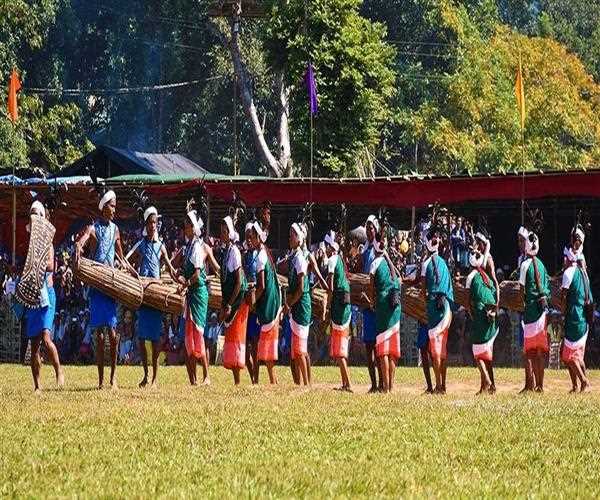The tribes residing in Meghalaya are mainly classified into three groups - Garos, Khasis, and Pnars or Jaintias.

Garos are considered as the descendants of Tibet-Burma race who came down from
Tibet to the North-Eastern states of India, while the tribe Khasis and Pnars or Jaintias are considered to be the descendants of Proto Australoid Monkhmer race. The tribes of
Garo are located in the Garo Hills of Meghalaya, while the Khasi tribe is scattered all across the state and are known by different names in different
regions.
Apart from these tribes, there are many other tribes located in Meghalaya. That are,
Bhois in the
Northern Meghalaya, Wars in the Southern Meghalaya, and Khynriams in the Central Meghalaya. All theses are sub-tribes of Khasis and the lifestyle of these sub-tribes is quite similar to that of the Khasis.

Interestingly, the culture of these tribes in Meghalaya have a matrilineal
society where inheritance and lineage are passed on to
women. In these tribes, a man is considered as the defender of the woman, but the woman is known to be the keeper of his trust.
Agriculture is the major source of livelihood of these tribal people. However, the other sources of income include the mineral-based industries, horticulture, forestry, and cottage houses and also promote
traditional arts and crafts.
The Khasi and Jaintia tribes of Meghalaya are variedly fond of
songs and music. In which they used to praise their land and nature, lakes and waterfalls, their landscape of hills. The
Garo songs are based on folk which is usually dedicated or based on the themes of marriage, love, birth,
festivals, and serious deeds.
Apart from that, the culture of modern Garo community has been greatly influenced by the
Christianity culture. The Garo language based on the Bodo branch of the Bodo-Naga-Kachin family of the Sino-Tibetan family. As it is believed that the original
language of Garo has been lost during transit because traditionally the Garo language is not anywhere written down, customs, traditions, and beliefs, whereas, all these are handed down orally with the passing
generation.